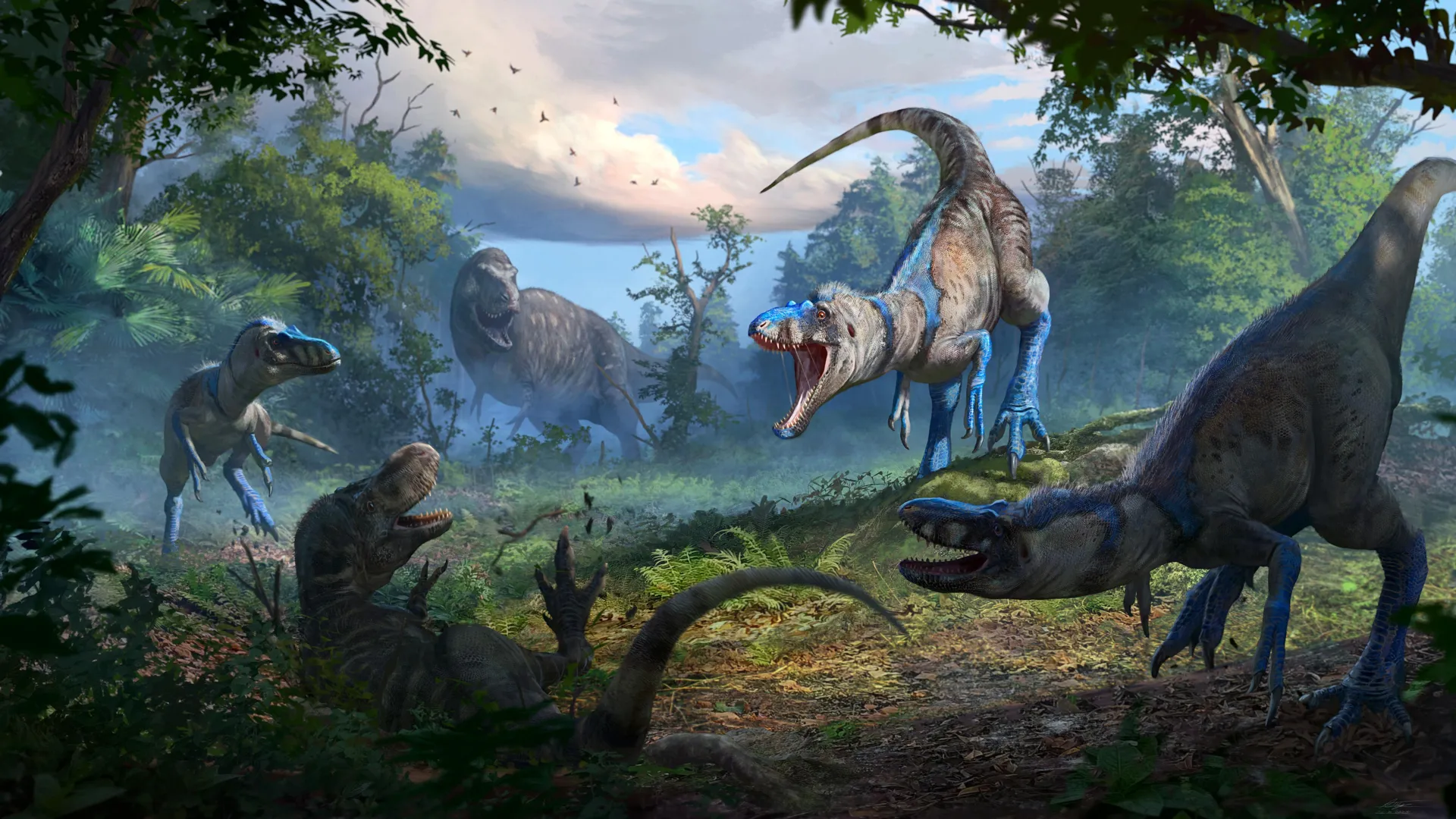Could everything we thought we knew about T. rex growth be wrong? A remarkably complete tyrannosaur skeleton has brought new clarity to one of paleontology’s longest debates: whether Nanotyrannus was its own species or merely a young Tyrannosaurus rex.
The fossil comes from the famous “Dueling Dinosaurs” discovery in Montana, which preserved two creatures locked in ancient combat — a Triceratops and a smaller-bodied tyrannosaur. After extensive analysis, scientists have confirmed that the smaller predator was not a juvenile T. rex, but an adult Nanotyrannus lancensis.
“This fossil doesn’t just settle the debate. It flips decades of T. rex research on its head,” says Lindsay Zanno, associate research professor at North Carolina State University and head of paleontology at the North Carolina Museum of Natural Sciences. Zanno co-authored the study recently published in Nature.
Evidence Points to a Fully Mature Predator
By studying bone growth rings, spinal fusion, and developmental anatomy, researchers determined that the animal was roughly 20 years old when it died — well into adulthood. Distinct traits, including longer arms, a greater number of teeth, fewer tail vertebrae, and unique skull nerve structures, all appeared early in development and are biologically inconsistent with T. rex.
“For Nanotyrannus to be a juvenile T. rex, it would need to defy everything we know about vertebrate growth,” explains James Napoli, an anatomist at Stony Brook University and co-author of the research. “It’s not just unlikely — it’s impossible.”
The findings carry major implications. For years, scientists relied on Nanotyrannus fossils to understand T. rex growth, behavior, and ecology. This new study reveals that such comparisons were mistaken — those bones belonged to two separate species. It also indicates that several kinds of tyrannosaurs may have lived side by side during the final million years before the asteroid impact that ended the age of dinosaurs.
A Hidden Species Revealed
Zanno and Napoli reviewed more than 200 tyrannosaur fossils during their research. One specimen, long thought to be a teenage T. rex, turned out to differ slightly from Nanotyrannus lancensis. The team designated it a new species, Nanotyrannus lethaeus, referencing the River Lethe from Greek mythology — a fitting tribute to a species “forgotten” for decades.
Recognizing Nanotyrannus as a valid genus reshapes our picture of the late Cretaceous ecosystem. Predator diversity during that time appears to have been far greater than scientists once assumed, suggesting that other small dinosaur species might also have been misclassified.
“This discovery paints a richer, more competitive picture of the last days of the dinosaurs,” says Zanno. “With enormous size, a powerful bite force and stereoscopic vision, T. rex was a formidable predator, but it did not reign uncontested. Darting alongside was Nanotyrannus — a leaner, swifter and more agile hunter.”
The research, published in Nature, was supported by the State of North Carolina, NC State University, the Friends of the North Carolina Museum of Natural Sciences, and the Dueling Dinosaurs Capital Campaign.

